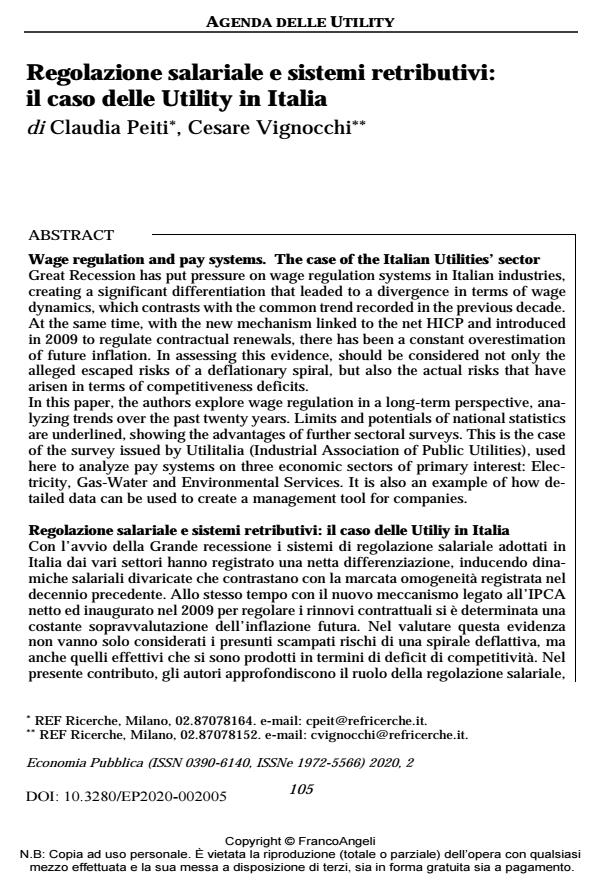Wage regulation and pay systems. The case of the Italian Utilities’ sector
Journal title ECONOMIA PUBBLICA
Author/s Claudia Peiti, Cesare Vignocchi
Publishing Year 2020 Issue 2020/2
Language Italian Pages 29 P. 105-133 File size 223 KB
DOI 10.3280/EP2020-002005
DOI is like a bar code for intellectual property: to have more infomation
click here
Below, you can see the article first page
If you want to buy this article in PDF format, you can do it, following the instructions to buy download credits

FrancoAngeli is member of Publishers International Linking Association, Inc (PILA), a not-for-profit association which run the CrossRef service enabling links to and from online scholarly content.
Great Recession has put pressure on wage regulation systems in Italian industries, creating a significant differentiation that leaded to a divergence in terms of wage dynamics, which contrasts with the common trend recorded in the previous decade. At the same time, with the new mechanism linked to the net HICP and introduced in 2009 to regulate contractual renewals, there has been a constant overestimation of future inflation. In assessing this evidence, should be considered not only the alleged escaped risks of a deflationary spiral, but also the actual risks that have arisen in terms of competitiveness deficits. In this paper, the authors explore wage regulation in a long-term perspective, analyzing trends over the past twenty years. Limits and potentials of national statistics are underlined, showing the advantages of further sectoral surveys. This is the case of the survey issued by Utilitalia (Industrial Association of Public Utilities), used here to analyze pay systems on three economic sectors of primary interest: Electricity, Gas-Water and Environmental Services. It is also an example of how detailed data can be used to create a management tool for companies.
Keywords: Wage differentials, collective bargaining, utilities
Jel codes: 31, E31, J52, J58, K23
Claudia Peiti, Cesare Vignocchi, Regolazione salariale e sistemi retributivi: il caso delle Utility in Italia in "ECONOMIA PUBBLICA " 2/2020, pp 105-133, DOI: 10.3280/EP2020-002005